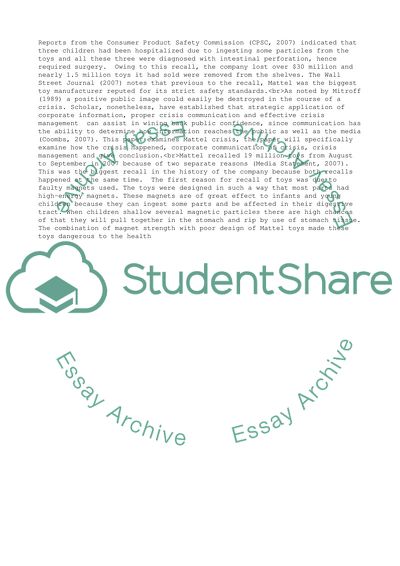Cite this document
(“Mattel Organizational Crisis Essay Example | Topics and Well Written Essays - 3000 words”, n.d.)
Mattel Organizational Crisis Essay Example | Topics and Well Written Essays - 3000 words. Retrieved from https://studentshare.org/business/1579062-mattel-organizational-crisis
Mattel Organizational Crisis Essay Example | Topics and Well Written Essays - 3000 words. Retrieved from https://studentshare.org/business/1579062-mattel-organizational-crisis
(Mattel Organizational Crisis Essay Example | Topics and Well Written Essays - 3000 Words)
Mattel Organizational Crisis Essay Example | Topics and Well Written Essays - 3000 Words. https://studentshare.org/business/1579062-mattel-organizational-crisis.
Mattel Organizational Crisis Essay Example | Topics and Well Written Essays - 3000 Words. https://studentshare.org/business/1579062-mattel-organizational-crisis.
“Mattel Organizational Crisis Essay Example | Topics and Well Written Essays - 3000 Words”, n.d. https://studentshare.org/business/1579062-mattel-organizational-crisis.


